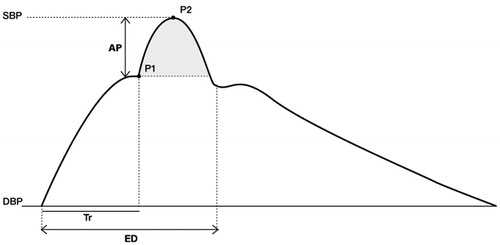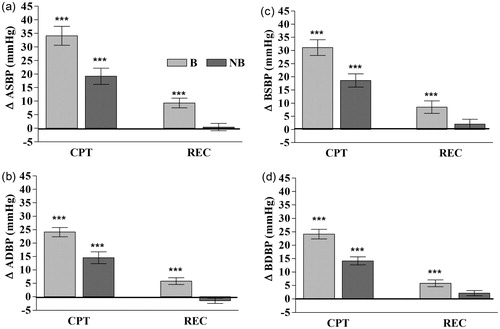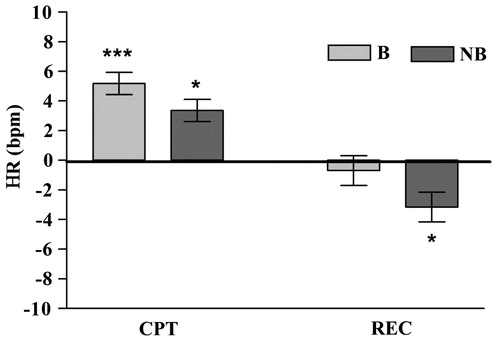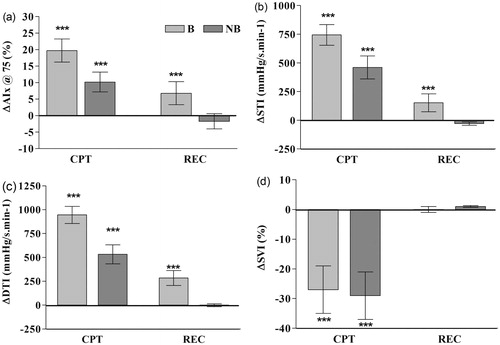Figures & data
Figure 1. Schematic representation of a typical aortic pulse pressure waveform. SBP: systolic blood pressure; DBP: diastolic blood pressure; AP: augmentation pressure; P1: pressure of the first systolic peak; P2: pressure of the second systolic peak; Tr: transit time of the reflected wave; ED: systolic ejection duration.

Table 1. Health characteristics.
Table 2. Hemodynamic responses to cold pressor test (4 °C) between B and NB groups.
Table 3. Contrasts analyses of hemodynamic values.
Figure 2. Mean peripheral and central blood pressure changes from baseline to cold pressor test (CPT) and to recovery period (REC) between burnout (B) and non-burnout (NB) groups. Data are mean difference changes and 95% CI. (a) ASBP: aortic systolic blood pressure; (b) ADBP: aortic diastolic blood pressure; (c) BSBP: brachial systolic blood pressure; (d) BDBP: brachial diastolic blood pressure. ***p < 0.001 change from baseline. Univariate contrasts examined adjusted marginal means.

Figure 3. Mean heart rate (HR) changes from baseline to cold pressor test (CPT) and to recovery period (REC) between burnout (B) and non-burnout (NB) groups. Data are mean difference changes with 95% CI. ***p < 0.001, *p < 0.05 change from baseline. Univariate contrasts examined adjusted marginal means.

Figure 4. Mean hemodynamic changes from baseline to cold pressor test (CPT) and to recovery period (REC) between burnout (B) and non-burnout (NB) groups. Data are mean difference changes and 95% CI. (a) AIx @75: augmentation index adjusted at 75 bpm; STI: systolic time interval; DTI: diastolic time interval; SVI: subendocardial viability index. ***p < 0.001 change from baseline. Univariate contrasts examined adjusted marginal means.

